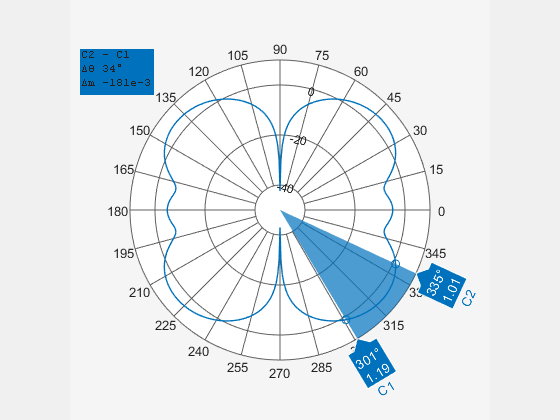beamwidth
Beamwidth of antenna
Syntax
Description
beamwidth(
plots the beamwidth of the specified antenna or array at the specified frequency. The
beamwidth is the angular separation at which the magnitude of the directivity pattern
decreases by a certain value from the peak of the main beam. The directivity decreases in
the direction specified by azimuth and elevation angles of the antenna. object,frequency,azimuth,elevation)
Note
beamwidthplots only one beamwidth for symmetrical patterns.beamwidthmight not interpret partial angle data well.
Examples
Input Arguments
Output Arguments
Version History
Introduced in R2015a


